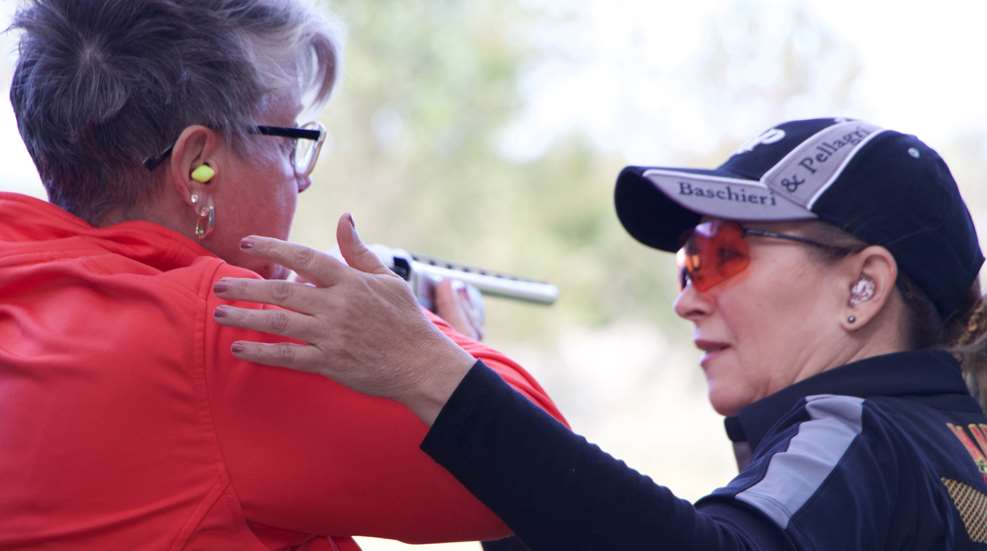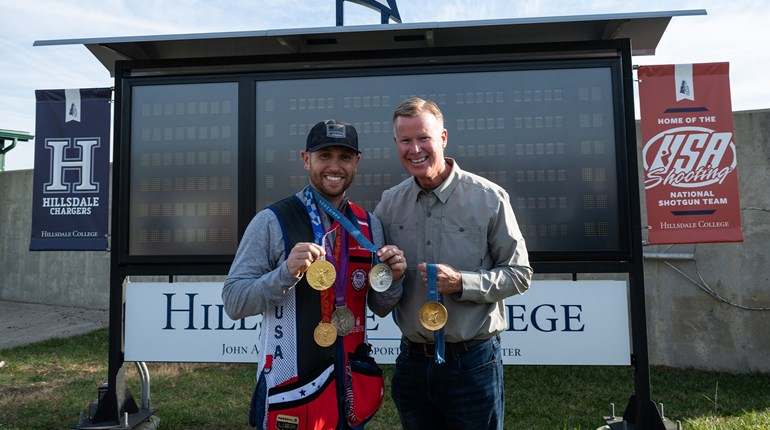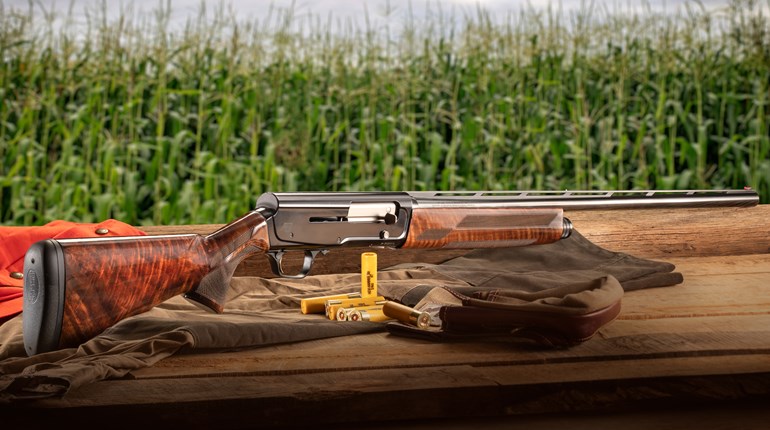
Is shotgun shooting more frustrating for you than fun? Do you often miss easy shots, and when you do finally connect are you chipping and cracking the edges of clay targets rather than crushing them? If so, the problem may not be a lack of shooting skill or poor hand-eye coordination. Rather, it could be the simple fact that your shotgun does not fit you properly.
Shotgun fit is so important that most shooting experts believe it makes up 50 percent or more of the formula for hitting flying targets, both clays and gamebirds. The reason behind its importance is the time—or lack of it—that you have to hit a flying target.
The time it takes to see a target, determine if it’s in range and decide to shoot is usually only a few seconds. That said, you have no extra time to adjust your body to the gun. The shotgun must already be adjusted to your body before you bring it to your shoulder.
Rifle shooting, by contrast, is just the opposite. When firing a rifle, you are usually shooting at a static target. Since the target does not move, you have time to adjust your body to the gun. Shotgunning has the added complexity of your eyes being the rear sight. So, if your eyes are positioned in the wrong place atop the stock because of improper shotgun fit, you miss.
Rod Stumbo has been fitting and adjusting shotgun stocks to shooters for years. His shop is located in north-central Ohio, but he also travels eight months each year to a dozen of the largest clay-target competitions east of the Mississippi, altering shooters’ shotguns from a large RV mobile unit. “On a scale of one to 10, fit is a 10 when it comes to successful shotgun shooting,” said Stumbo.

Courtesy Browning.com
When Stumbo begins a fitting session with a shooter, man or woman, he first looks at the overall length of the shotgun. “When a shooter mounts the gun, there should be about two finger widths of space between the knuckle of the thumb (on the hand holding the stock’s pistol grip) and the tip of their nose,” said Stumbo. “More length than that and the gun needs to be shortened; less length, and the gun needs to be lengthened. That adjustment is accomplished by either shortening or lengthening the stock and is called length of pull.”
Stumbo next makes sure that the pupil of the shooter’s dominant eye aligns with the gun’s front sight. If it doesn’t, he adds an adjustable comb to the top of the stock that raises the shooter’s head when the gun is mounted. The adjustable comb can also be moved right or left, an adjustment known as cast on or cast off.
Thirdly, he looks at pitch, the angle at which the butt of the gun contacts a shooter’s shoulder. “There are two adjustments for pitch,” Stumbo said, “up pitch or down pitch. Ideally, when the gun fires, the same amount of pressure is exerted on a shooter’s shoulder along the entire length of the recoil pad.”
What brings most shooters to Stumbo for his advice and expertise is relief from recoil. “Poor fit causes excessive recoil,” said Stumbo. “I’ve seen some shooters so beat up by their guns that their cheek is actually swollen and bleeding. If it hurts to shoot your shotgun, it’s obviously not fitting you properly and needs to be adjusted.”
Stumbo said that the most gratifying part of his job is adjusting a shooter’s shotgun and then seeing him or her go to the range and top their previous high score. “To me, that’s the ultimate compliment,” he said.
Most American shotguns are manufactured for the average male shooter, a guy standing about 5' 9" tall and weighing about 160 lbs. That said, I asked Stumbo about the most common adjustment he has to make when women bring him a shotgun.
“Usually, their gun is too long, so length of pull is the most common adjustment,” he said. “Another adjustment has to do with women’s collarbones, which are more prominent because most women don’t have the amount of muscle mass near the top of their chest that a man does. As a result, the butt pad of the shotgun needs to fit below a woman’s collarbone. This often calls for a pad adjustor that allows the pad to move up and down, left or right.”
Another difference in fitting women is that they tend to develop a sore cheek from shooting more easily than men. The answer, he said, is installing a “soft comb” on a woman’s shotgun. “To do that, I first cut down into the top of the existing comb, removing about a quarter-inch of wood. I then add an adjustable comb that can move up, down, left or right. The wood I’ve removed is then replaced with a foam-like material and covered with leather. This adjustment helps beginning shooters, women or men, learn to keep their head on the stock.”
If you are a relatively new shotgunner, Stumbo advises developing a consistent gun mount before having a shotgun professionally fitted. “If you are not mounting the shotgun in the exact same place on your shoulder consistently, it will be a waste of time for both you and the fitter,” he said. “For a beginning shooter, it could take a couple thousand rounds to develop a consistent gun mount. A shooting coach can help here, preventing you from forming bad habits when first starting out.”
Stumbo’s last suggestion for women is to not buy a shotgun that’s too light, as light shotguns tend to produce more felt recoil, no matter if the shotgun is properly fitted or not.
Most professional shotgun fitters will take about an hour to properly fit a shotgun to a shooter, charging about $100 for the session. If additional adjustments are needed, possibly another short session or two may be required, punctuated by a practice round at the range to make sure everything is correct.
Regardless of what shotgun sport you enjoy—trap, skeet, sporting clays or wingshooting— you’ll benefit from a fitted shotgun. To locate a professional fitter near you, contact a local gunsmith or shooting-range manager and ask for referrals. You’re guaranteed to crush more clays and make more feathers fly.















































